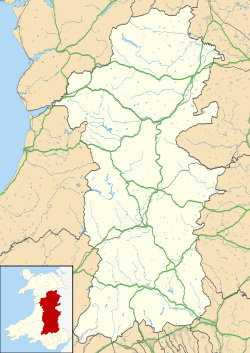| Bwlch | |
|---|---|
 Bwlch War Memorial | |
Location within Powys | |
| Population | 1,026 (Llanfihangel Cwmdu with Bwlch and Cathedine) (2011) [1] |
| OS grid reference | SO150220 |
| Community | |
| Principal area | |
| Preserved county | |
| Country | Wales |
| Sovereign state | United Kingdom |
| Post town | Brecon |
| Postcode district | LD3 |
| Police | Dyfed-Powys |
| Fire | Mid and West Wales |
| Ambulance | Welsh |
| UK Parliament | |
| Senedd Cymru – Welsh Parliament | |
Bwlch ( Welsh for 'a pass') is a village and an electoral ward in the community of Cwmdu and District, Powys, south Wales. The settlement is strung out along the A40 road which crosses a low col above the Usk Valley at this point on its route between Brecon and Crickhowell.


